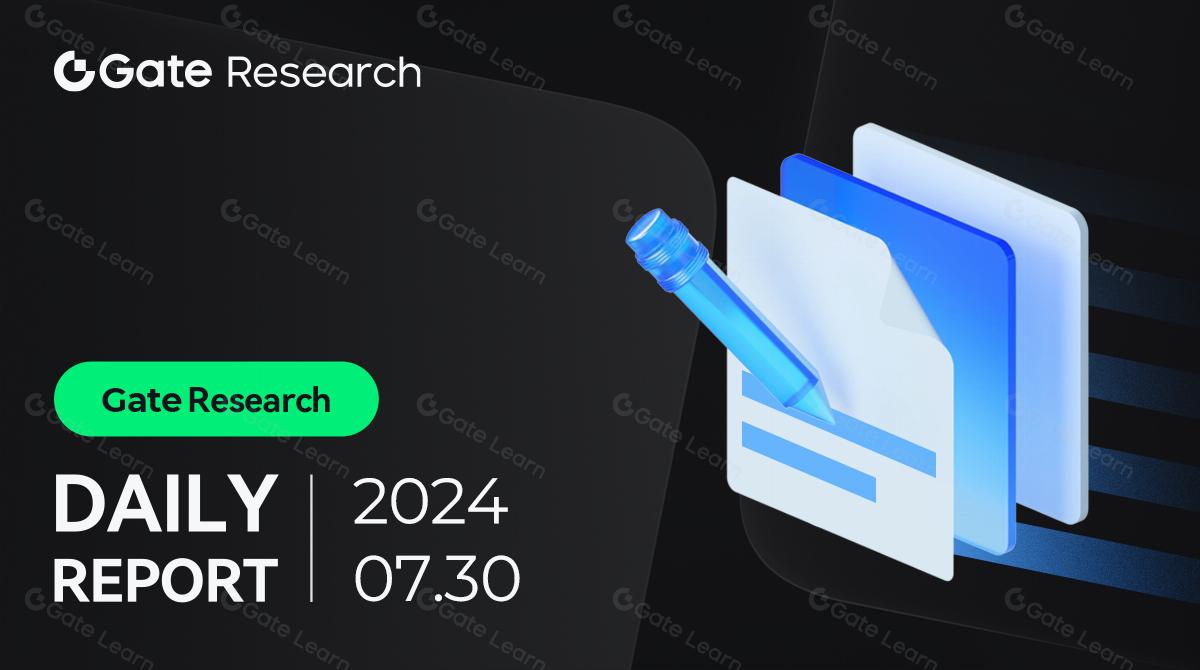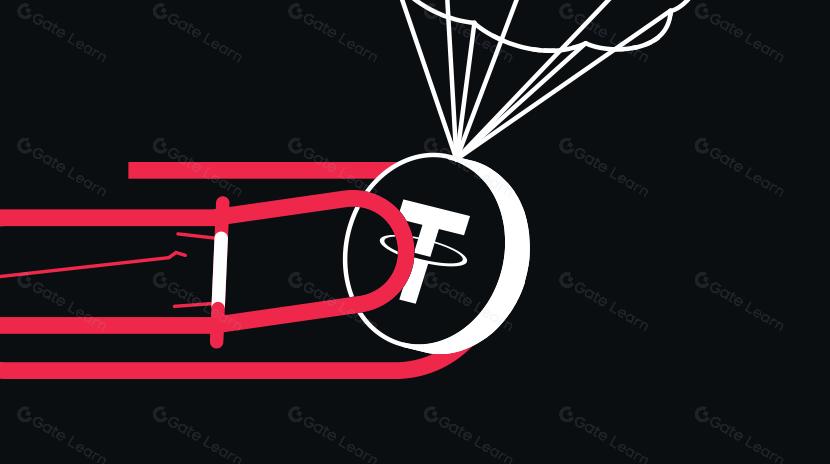Initia: Xây dựng lại Nền tảng Tin cậy trong Airdrop
Chuyển tiếp Tiêu đề Ban đầu ‘Đánh giá Airdrop Initia: Sự trở lại của Bán lẻ! Với Quản lý Kỳ vọng Chính xác, Initia đã làm đúng điều gì?
Năm ngoái, tôi đã viết một bài viết “Cách Quản Lý Kỳ Vọng Airdrop: Cách Đúng Đắn cho Các Dự Án Nắm Bắt ‘Bức Tranh Toàn Cảnh’” (liên kết: (https://x.com/Ice_Frog666666/status/1843955200958271659…)
Tuy nhiên, thực tế mỉa mai đã cho tôi thấy một mặt khác của ngành công nghiệp - kỳ vọng của người dùng sụp đổ, niềm tin vào các bên dự án bị phá sản, vốn rơi vào vòng luẩn quẩn, và cuối cùng tôi buộc phải theo đuổi con đường bảo vệ quyền lợi người dùng.
Airdrops, một khi được coi là động cơ tăng trưởng, đã suy thoái thành những trò chơi “thu hoạch”—cho đến khi airdrop của Initia xuất hiện. Không chỉ xác nhận quan điểm ban đầu của tôi, mà nó cũng chứng minh rằng một airdrop không có người thua cuộc là hoàn toàn có thể.
Airdrop này của Initia cho thấy cho toàn bộ ngành công nghiệp thấy điều gì mới là ‘bức tranh tổng thể’ thực sự: xây dựng niềm tin thông qua sự minh bạch, quản lý kỳ vọng với các quy tắc hợp lý, và biến airdrop từ các công cụ tiếp thị đơn giản thành cơ sở hạ tầng cơ bản cho quản trị dự án.
1. Chiến lược Airdrop ban đầu: Không Manipulation, Không Gimmicks — Một Trở lại cơ bản trong User Engagement
Vào tháng 9 năm ngoái, hai người sáng lập Initia đã có một cuộc phỏng vấn trong đó họ chia sẻ triết lý cốt lõi của họ: sát cánh cùng cộng đồng và tạo ra giá trị bền vững, lâu dài. Họ công khai từ chối việc tập trung vào ngắn hạn. Từ phân tích trước đó và những tuyên bố của các người sáng lập, rõ ràng rằng Initia thực sự đang thực hành tư duy dài hạn - từ thiết kế sản phẩm, tokenomics và chiến lược airdrop của họ.
Nhìn kỹ hơn vào airdrop của Initia cho thấy không có chiến thuật hào nhoáng hay “thiên tài”. Không có thao tác “treo lủng lẳng củ cà rốt” đối với người dùng PUA, và đáng chú ý nhất, airdrop được thực hiện với sự phụ thuộc tối thiểu vào KOL. Tôi gọi đây là “triết lý thị trường thực tế” – đơn giản nhưng hiệu quả đáng kể. Chỉ cần ba điều: công bằng, liêm chính và minh bạch. Không có gì hơn.
1. Sự minh bạch: Quy định rõ ràng, Tiến trình minh bạch
Từ nhiệm vụ testnet đầu tiên, Initia đã làm rõ cấu trúc động viên của mình. Khi giai đoạn đó kết thúc, nhóm không trì hoãn hoặc giả vờ họ đã mạnh dạn thông báo rằng sẽ không có phần thưởng nào khác cho giai đoạn đó.
Ngoài ra, cơ chế chống Sybil đã được kích hoạt trong giai đoạn testnet chính, không phải sau này. Tư cách tích cực này đã loại bỏ nghi ngờ về lợi thế của người nội bộ. Khác với một số dự án khác cho phép bot tăng số liệu một cách im lặng từ đầu, chỉ để sau này thay đổi quy tắc khi đã quá muộn - Initia đặt kỳ vọng từ sớm và giữ vững chúng.
Đó giống như đi vào một chợ nông sản nơi mọi giá cả đều được ghi rõ - bạn biết bạn đang nhận được điều gì, và sự lựa chọn là của bạn. Không có mánh khóe, không có âm mưu ẩn.
2. Công bằng: Airdrop bao gồm Điều chỉnh Động
Một điểm nổi bật khác của airdrop của Initia là sự khác biệt so với các mô hình truyền thống tập trung vào KOLs và whales. Thay vào đó, Initia đã thiết kế một khung phân phối token bao quát phản ánh một tầm nhìn thực sự cao cấp.
Không Có Rào Cản Đối Với Việc Tham Gia: Hầu hết người dùng có thể nhận được hơn 400 token chỉ bằng cách hoàn thành hai bài đăng trên Twitter, mở rộng sự tham gia đến người dùng thực sự hàng ngày.
Thiết kế Incentive dài hạn: Airdrop đã phủ sóng 4.000 người dùng thông qua hệ thống điểm YAP - vượt xa mô hình thông thường “top 100” - đảm bảo rằng người tham gia cấp độ nhỏ và trung cấp được thưởng tỷ lệ theo đó với đóng góp của họ.
Cơ chế Điều chỉnh Động: Bằng cách loại bỏ khoảng 1 triệu tài khoản ít tương tác, đã phân bổ thêm token cho những người dùng tham gia sâu, tạo ra một vòng lặp phản hồi tích cực mạnh mẽ: bạn càng tương tác nhiều, thưởng của bạn càng lớn.
Trong suốt quá trình, dù bạn là một KOL hay một người dùng thông thường, trọng tâm đặt vào sự công bằng và quy tắc minh bạch—không phải là sự hào nhoáng do ảnh hưởng từ người nổi tiếng.
3. Integrity: Keeping Promises, No Manipulation
Initia luôn thể hiện tính chính trực trong cả giao tiếp và thực hiện. Không có lời hứa mơ hồ hoặc gây hiểu lầm. Ví dụ, khi các nhà sáng lập đăng tweet cho biết TGE sẽ được ra mắt vào cuối tháng, thì nó thực sự ra mắt đúng vào lịch trình.
Ngoài ra, sự phát triển của mạng thử nghiệm và mạng chính diễn ra một cách chặt chẽ, với một lộ trình rõ ràng: sau khi hoàn thành 70%, phần còn lại được lên lịch một cách minh bạch trong vòng ba tháng. Sự rõ ràng tương tự được phản ánh trong giai đoạn airdrop - thời hạn, thông báo trên Twitter và Discord, và thực hiện đều phù hợp. Cam kết đã được đưa ra - và được giữ lời.
2. Initia Để Người Dùng Trải Nghiệm Cảm Giác của Sự Đầu Tư Dài Hạn Thực Sự
Dựa trên ba nguyên tắc được nêu trước đó, không có gì ngạc nhiên khi các thành viên cộng đồng bắt đầu tự nguyện hỗ trợ dự án. Initia cho phép người dùng thực sự cảm thấy cam kết lâu dài thay vì bị cuốn vào các trò chơi đầu cơ ngắn hạn. Sự tích tụ dần dần niềm tin này đã biến người dùng từ “thợ săn airdrop” thụ động thành những người tham gia tích cực vào hệ sinh thái. Nhiều người thậm chí còn bắt đầu tự mình quảng bá và bảo vệ dự án. Khi các quy tắc rõ ràng, lợi ích được liên kết và giá trị được đồng tạo ra, lòng trung thành và sự gắn bó của cộng đồng phát sinh một cách tự nhiên.
Initia đã chứng minh rằng trong thế giới phi tập trung, sức mạnh cốt lõi không đến từ KOLs - mà đến từ đa số im lặng. Các chương trình Airdrop truyền thống thường tập trung vào những người ảnh hưởng và cá voi, để lại người dùng bình thường như là người đứng xem. Ngược lại, Initia đã xây dựng một chiến lược tập trung vào tính bao gồm, đóng góp có thể đo lường và thực hiện minh bạch - đảm bảo mỗi người dùng thực sự nhận được phần thưởng phù hợp với nỗ lực của họ.
Từ một góc độ kinh doanh, thành công của Initia không được xây dựng trên những chiêu trò lòe loẹt hoặc thủ thuật phức tạp. Nó chủ yếu dựa trên đạo đức kinh doanh cơ bản: chiến lược dài hạn không đòi hỏi thiết kế xa hoa - nó chỉ đòi hỏi thực hiện những lời hứa cơ bản, đầy đủ và nhất quán. Đó là tất cả.
Phương pháp này được phản ánh trong các doanh nghiệp gia đình trăm tuổi và các người bán khiêm tốn tại các chợ vật lý: những hành động đơn giản, nhất quán mà dần dần tạo dựng niềm tin lâu dài.
3. Nhìn vào tương lai: Ngành công nghiệp thực sự cần loại Airdrop nào?
Liệu trong ngành công nghiệp này còn tồn tại chỗ cho việc Airdrop không? Tôi tin rằng Initia đã cung cấp câu trả lời. Nếu nhóm tiếp tục hoạt động với mức độ chân thành này và duy trì tốc độ phát triển công nghệ, sức sống và tiềm năng của dự án có thể vượt xa mọi kỳ vọng.
Trong không gian này, việc thả coin đã bị lạm dụng ngày càng nhiều - nhiều dự án chìm đắm trong câu chuyện lớn mà lại thất vọng trong việc thực hiện thả coin thực sự. Initia đã chứng minh rằng nếu bạn có thể đơn giản và trung thực ‘nấu một tô mì ngon’, sự chân thành đó có giá trị hơn rất nhiều so với một bữa tiệc hão nhoáng hư cấu. Đó là một triết lý khiêm tốn về sự tương tác của người dùng, nhưng có lẽ đó cũng chính là chìa khóa để đột phá.
Airdrops không được thiết lập để là trò chơi không có người thắng, cũng không nên được sử dụng như là công cụ khai thác. Chúng nên phục vụ như cơ sở hạ tầng cơ bản cho sự tin cậy trong ngành công nghiệp. Trong môi trường hiện nay, một airdrop tốt nên: minh bạch (các quy tắc có thể được xác minh), đóng góp có thể được định lượng (công bằng), thu nhập có thể được tích lũy (tính lâu dài), giá trị có thể được phân tán (sự cân bằng hệ sinh thái), và lời hứa có thể được thực hiện (chính trực).
Một câu hỏi sâu sắc nảy sinh: liệu các nhóm dự án và vốn có xem người dùng chỉ như là lưu lượng, hay như là tài sản quý giá? Nếu người dùng chỉ được xem là lưu lượng và không được coi là tài sản dài hạn cần được chăm sóc, thì chu kỳ phản đối, méo mó và thậm chí hoạt động của người dùng sẽ tiếp tục tồn tại.
Không gian tiền điện tử vẫn đang ở giai đoạn khởi đầu lạnh lẽo của mình, và airdrop vẫn là một công cụ thị trường cần thiết. Nhưng nếu người dùng chỉ được coi là những người cơ hội ngắn hạn, ngành công nghiệp sẽ rơi vào một chu kỳ ác liệt: lợi nhuận ngắn hạn cho người dùng → trích xuất từ phía dự án → sụp đổ niềm tin thị trường. Điều mà ngành công nghiệp thực sự cần không chỉ là một cuộc cách mạng trong cơ chế của airdrop—mà cần các nhóm dự án và vốn cùng chia sẻ cùng một hiểu biết về các quy tắc, sự minh bạch và sự cân nhắc cộng đồng.
Có lẽ đến lúc phải nói rõ: hệ thống airdrop cần được cải cách từ phía cung cấp.
Miễn trừ trách nhiệm:
- Bài viết này được sao chép từ [ ice frogChuyển tiếp Tiêu Đề Gốc ‘Đánh Giá Airdrop Ban Đầu: Sự Trở Lại Của Bán Lẻ! Với Quản Lý Kỳ Vọng Chính Xác, Initia Đã Làm Đúng Điều Gì?’. Bản quyền thuộc về tác giả gốc [ ice frog] nếu bạn có bất kỳ ý kiến nào về việc sao chép, vui lòng liên hệ với Cổng Họcđội, và đội sẽ xử lý nó càng sớm càng tốt theo các quy trình liên quan.
- Thông báo từ chối trách nhiệm: Các quan điểm và ý kiến được thể hiện trong bài viết này chỉ đại diện cho quan điểm cá nhân của tác giả và không cấu thành bất kỳ lời khuyên đầu tư nào.
- Các phiên bản ngôn ngữ khác của bài viết được dịch bởi nhóm Gate Learn và không được đề cập trongGate, bài viết dịch không được sao chép, phân phối hoặc đạo văn.
Bài viết liên quan

Nghiên cứu của Gate: bitcoin điều chỉnh sau khi vượt qua mốc 70.000 đô la, số giao dịch trên chuỗi của Solana vượt qua Ethereum

Top 20 Tiền điện tử Airdrop vào năm 2025

Gate Research: Thị trường Crypto ổn định và phục hồi, Bitcoin thử nghiệm 57.600 đô la, Ethereum gặp khó khăn

Hướng Dẫn Phòng Chống Airdrop Lừa Đảo

The Airdrop Meta: a Lull in Performance or an Obituary?


